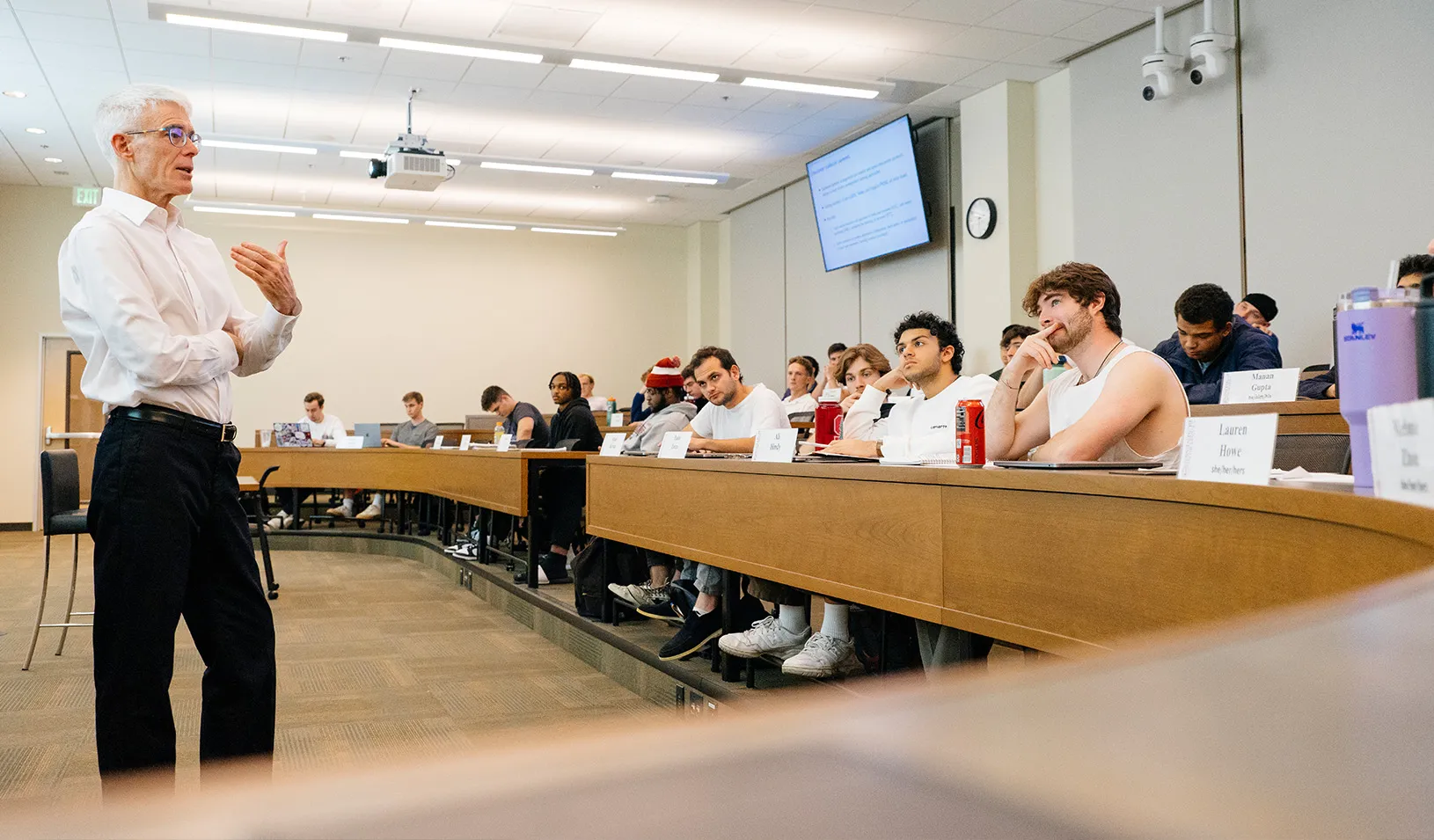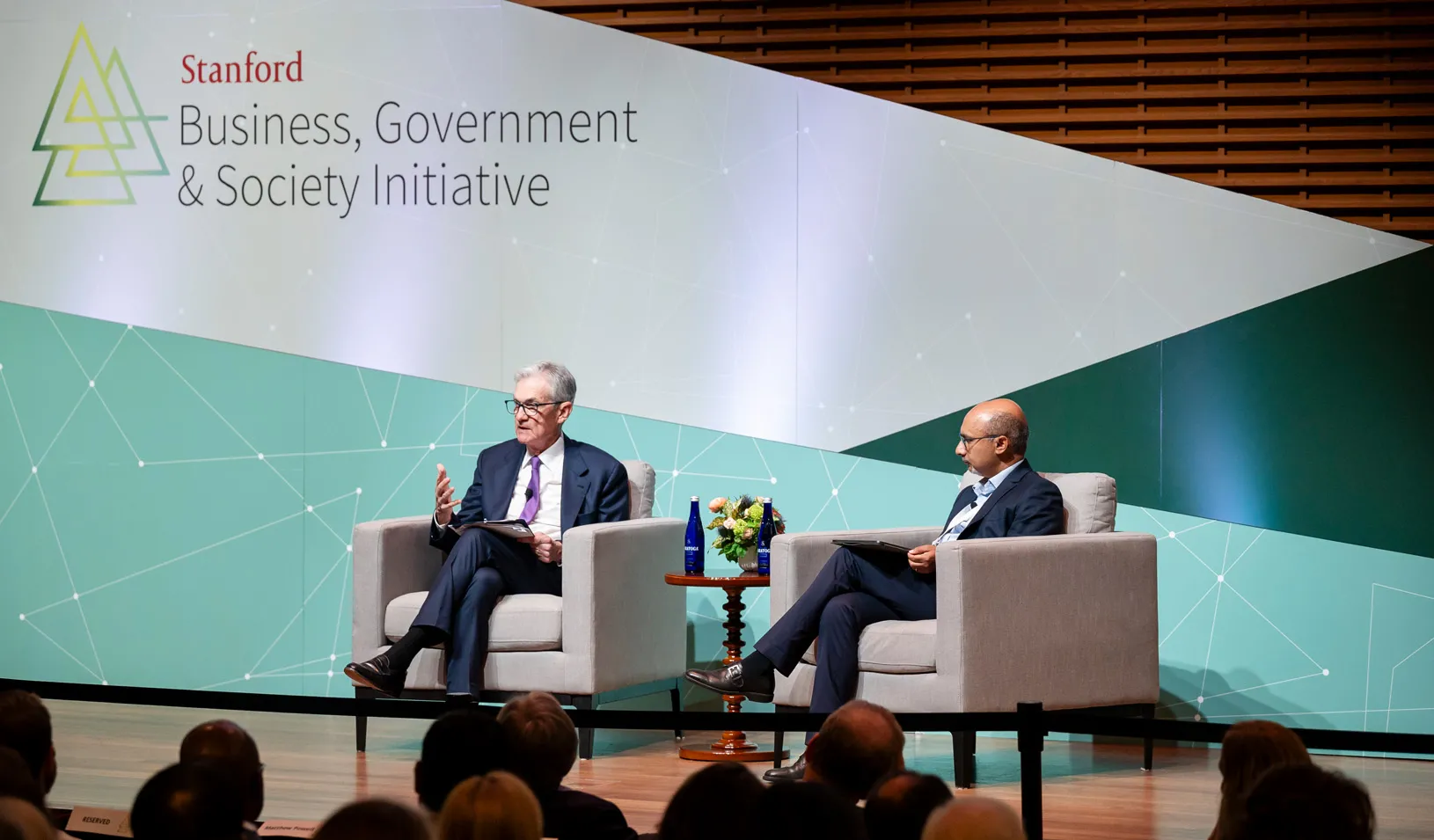Students in Joint MBA/MS Degree Focus on the Environment
Stanford GSB students in the interdisciplinary MBA/MS joint degree program complete graduate studies in the School of Earth Sciences.
January 01, 2011
Nuclear power plants don’t have to be as expensive and large as they currently are if they utilize Small Modular Nuclear Reactors, which could be the future of atomic power generation. Glorified golf carts could be an important mode of transportation for the 93% of trips that take Americans less than five miles from their home, but will require a change in consumer behavior to take hold. And charging motorists to follow certain traffic patterns could go a long way to relieving congestion.
These were a few conclusions reached in December by three interdisciplinary students working toward joint degrees when they presented their final Capstone Projects to faculty, fellow students, and friends at a symposium held by the Emmett Interdisciplinary Program in Environment and Resources. In addition to earning MBA degrees, the students also are working toward Master of Science degrees - preparing to become the next generation of scholars and leaders to address the world’s most challenging environmental and sustainability problems.
Megan Guy, MBA/MS Class of ‘11, presented a detailed analysis comparing the large Light Water Reactors generally in use today to the newer, more streamlined SMRs coming to market. The Small Modular Nuclear Reactors typically measure 14’ x 60’ and can be built offsite, thus reducing construction times and costs.
“A major benefit of the SMRs is they require less fuel, which also doesn’t need to be replenished as often, producing far less waste,” Guy said. No SMRs have yet to be installed in the United States, although applications have been submitted. She said the SMRs will require a level of flexibility from the Nuclear Regulatory Commission, which until now had been basing its construction, safety, and operating protocols around the traditional LWRs. Guy’s Capstone project was selected by a faculty committee as the winning project of the quarter.
Graeme Waitzkin, MBA/MS Class of ‘11, demonstrated how stripped-down electric Low Speed Vehicles (LSVs), like golf carts, leave a much smaller carbon footprint than the battery-operated Tesla Roadster and Nissan Leaf. Because 93% of U.S. auto trips are less than 5 miles, he contends that an electric vehicle that can travel at high speeds and longer distances isn’t always needed.
Waitzkin worked with WENG Motor Co., a spinoff from Stanford’s Product Design Network, and said current LSV users are small fleets, like a college campus or retirees who live in closed communities. “A mobility behavior change in customers is needed before LSVs can catch on,” Waitzkin said. However, he pointed to the spike in scooter sales when gasoline prices skyrocketed in 2008 as proof behavior can change.
Eli Gregory, MBA/MS Class of ‘11, looked at the effect passenger vehicle congestion had on U.S. CO2 emissions. From 1982 to 2007, he said, fuel wasted annually per peak traveler grew from 9 gallons to 24 as the delay due to congestion rose from 14 hours to 36. Traffic congestion typically produces higher CO2 emissions than faster moving vehicles. A majority of the excess fuel is spent in 14 major U.S. metropolitan areas, one of those the San Francisco Bay Area.
Gregory studied how several approaches in the Bay Area could mitigate congestion. One option was cordoning off the Northeast section of San Francisco during peak hours and charging all vehicles driving through that zone, similar to a current system in London. Another proposal involved conversion of carpool lanes to High Occupancy/Toll Lanes, which would relieve congestion in the remaining lanes. His third solution was peak pricing on the Bay Bridge, which could decrease CO2 emissions by 52% during morning peak travel time.
The interdisciplinary Joint MBA/MS degree, which was approved by Stanford’s faculty senate in 2007, allows MBA students to apply during their first year to complete a joint MS/MBA degree with E-IPER, an interdisciplinary graduate program in the School of Earth Sciences that includes affiliated faculty from all seven schools at Stanford. Once accepted, students continue their MBA courses and simultaneously take classes toward the MS. Typically students, who design their own course of study, take two years plus one to three additional quarters to complete both degrees, which are awarded simultaneously. Since the program’s inception 48 business students are in the process of or have completed the program.
By Arthur Patterson
For media inquiries, visit the Newsroom.
Explore More
Back to Class: Pathfinder

Business, Government, and Society Forum Looks at New Demands on Leadership

Erin Nixon Joins Stanford GSB as Assistant Dean of Admissions
